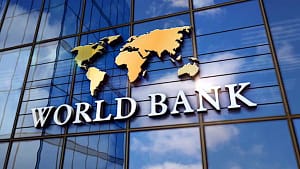
The World Bank estimates that by 2030, 622 million people (7.3% of the global population) will still be living in extreme poverty due to stalled efforts to eradicate it. This projection was revealed in the Bank’s “Poverty, Prosperity, and Planet” report, which highlights that the global goal of ending extreme poverty (living on less than $2.15 per day) by 2030 is now unachievable. The World Bank suggests that eliminating poverty at this level, particularly in low-income countries, could take over three decades.
As of 2024, nearly 700 million people (8.5% of the global population) live in extreme poverty, primarily due to setbacks from COVID-19, slow growth, and increased fragility. The report notes that poverty levels in low-income countries are now worse than before the pandemic. Additionally, 3.5 billion people (44% of the global population) live in poverty, measured at $6.85 per day, a threshold more relevant to upper middle-income countries. Population growth has kept the number of people below this line relatively unchanged since the 1990s.
The World Bank predicts that by 2030, 622 million people will live in extreme poverty, meaning only 69 million will escape it between 2024 and 2030, compared to 150 million from 2013 to 2019. Also, 3.4 billion people are expected to live on less than $6.85 per day by 2030.
The report highlights that, as of 2024, Africa makes up 16% of the world’s population but 67% of those in extreme poverty, with most of the world’s poorest residing in Sub-Saharan Africa or fragile, conflict-affected countries. Moreover, 72% of people in extreme poverty live in countries eligible for International Development Association (IDA) assistance.
Income inequality remains high, particularly in Sub-Saharan Africa, Latin America, and the Caribbean, with one-fifth of the global population living in highly unequal societies. According to the World Bank, it could take 100 years for a typical upper-middle-income country to close the prosperity gap unless faster, more inclusive income growth occurs.
The Bank recommends that low-income countries focus on economic growth and reducing multidimensional poverty, while middle-income countries should target inclusive income growth and lower carbon emissions. Upper-middle- and high-income countries, responsible for 80% of global greenhouse gas emissions, need to transition to low-carbon economies while addressing the costs of this shift.
Read Also:
